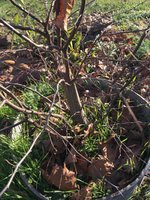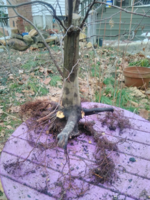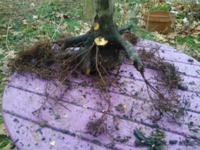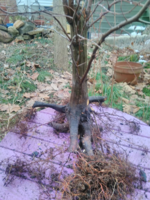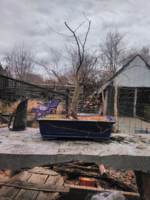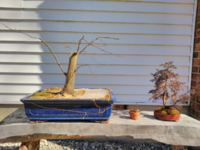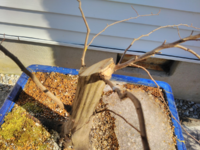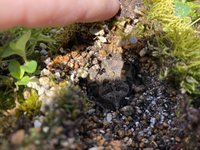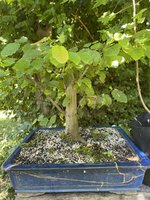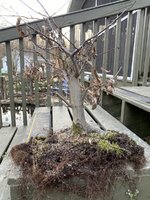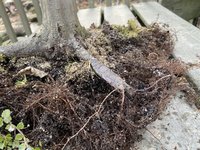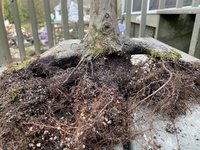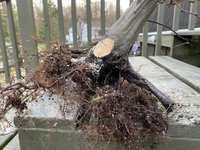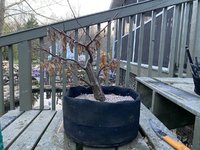Gabler
Masterpiece
I dug up this Ostrya virginiana "ironwood tree" three years ago, and I stuck it in this old, rusted-out wash tub as a field-growing container. I chopped the trunk to keep the foliage in proportion to the few remaining roots, and I haven't touched it since. I'll pull it out and see what kind of condition it's in this spring. The species is both native to and abundant throughout the Delmarva Peninsula, and the trunk measures about two and a quarter inches or roughly six centimeters at this time, so I believe it meets the rules requirements.




